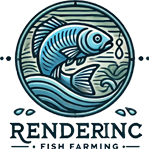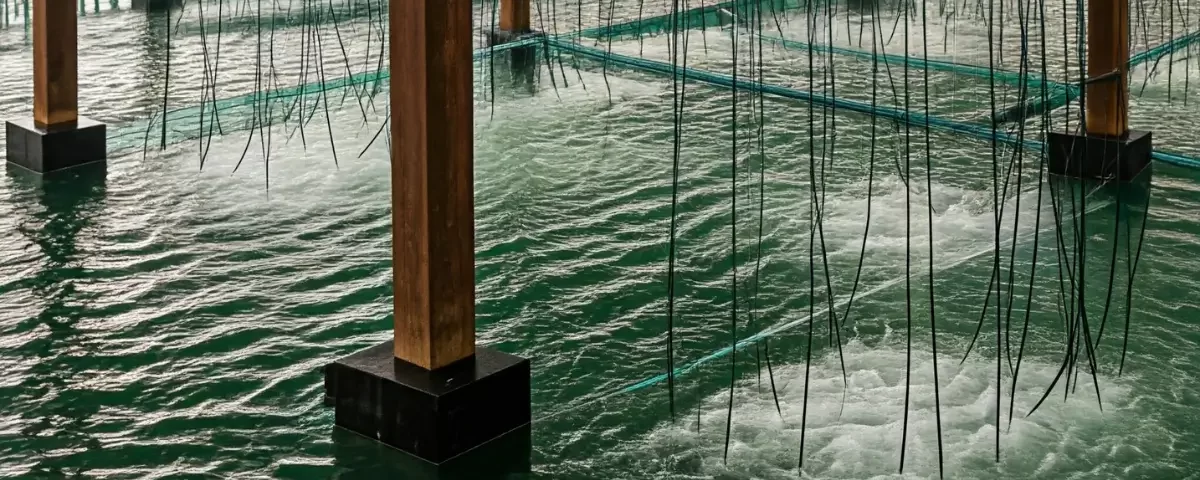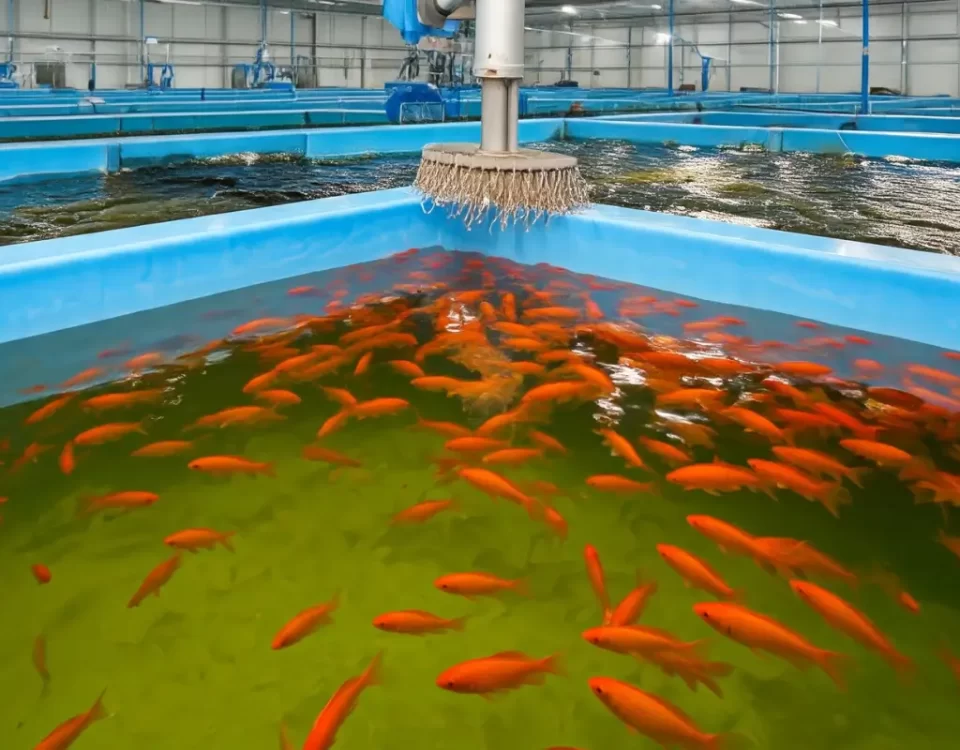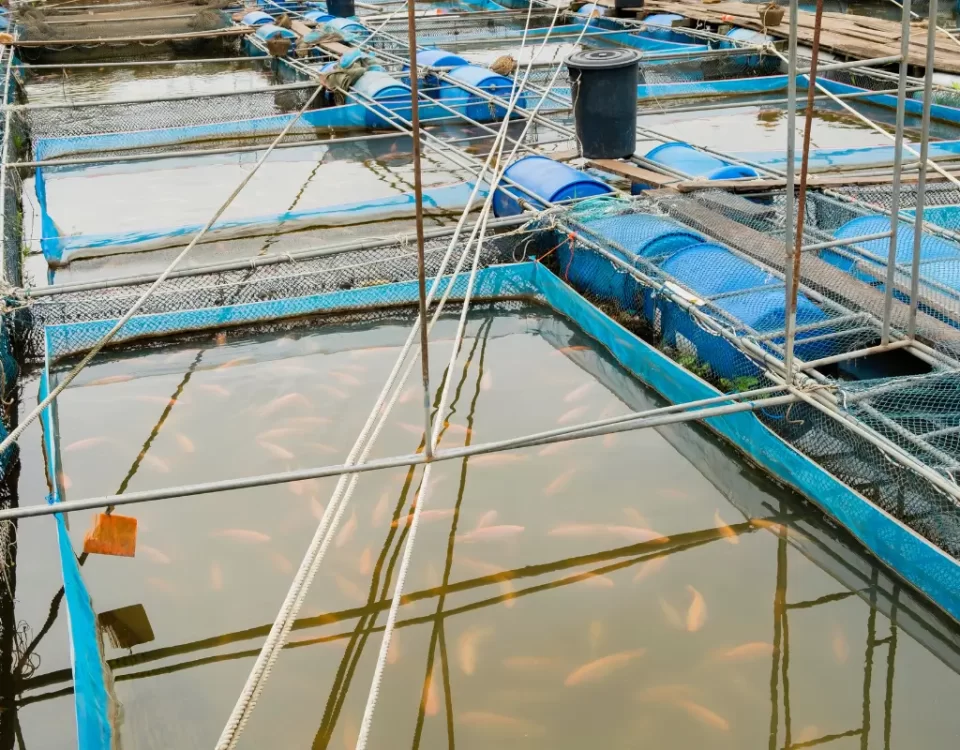Innovative Aquaculture Systems: Maximizing Efficiency and Sustainability

Cutting-Edge Aquaculture Technologies for Reducing Environmental Impact
August 24, 2024
Aquaculture Automation: Technology for Smarter Fish Farming
August 26, 2024Aquaculture, the practice of cultivating aquatic organisms under controlled conditions, plays a vital role in providing food security for an ever-growing global population. As wild fish stocks continue to decline due to overfishing and environmental changes, aquaculture has emerged as a sustainable solution to meet the increasing demand for seafood. The industry not only helps reduce pressure on wild fish populations but also contributes to economic development and the creation of employment opportunities in coastal communities worldwide.
Despite its significant contributions, traditional aquaculture methods are often criticized for their environmental impact and inefficiencies. The need for more innovative systems in aquaculture has become increasingly apparent to address these concerns and ensure the long-term sustainability of the industry. By enhancing efficiency and minimizing adverse environmental effects, innovative aquaculture systems have the potential to revolutionize the way seafood is produced while meeting the growing demands of a global market.
Importance of Maximizing Efficiency
Efficiency is a critical factor in the success of aquaculture operations, as it directly impacts productivity and profitability. With limited resources and growing competition, aquaculture producers are turning to innovative technologies and practices to streamline their operations and optimize production processes. By maximizing efficiency through the use of advanced equipment, data-driven decision-making, and optimized feed management, aquaculture farmers can achieve higher yields while reducing costs and minimizing waste.
The Drive for Sustainability
In addition to efficiency, sustainability is a key focus in modern aquaculture practices. Sustainable aquaculture seeks to minimize environmental impact, conserve natural resources, and promote the well-being of aquatic ecosystems. Innovative systems that prioritize environmental stewardship by incorporating practices such as recirculating aquaculture systems (RAS), integrated multitrophic aquaculture (IMTA), and precision aquaculture are paving the way for a more sustainable future for the industry. By implementing these technologies and strategies, aquaculture producers can reduce their carbon footprint, conserve water resources, and minimize the risk of pollution, ultimately ensuring the longevity of their operations.
In conclusion, the intersection of efficiency and sustainability is where the future of aquaculture lies. By embracing innovation and adopting cutting-edge technologies, the aquaculture industry can overcome existing challenges and pave the way for a more economically viable, environmentally friendly, and socially responsible approach to seafood production.
Traditional Aquaculture Practices
Aquaculture, the practice of farming fish, has been around for centuries, providing a vital source of seafood for communities around the world. Traditional aquaculture methods typically involve the cultivation of fish in ponds, cages, or tanks. In these systems, fish are typically raised in a contained environment where water quality, temperature, and feeding are carefully managed. While these practices have been effective in meeting the growing demand for seafood, they come with limitations that hinder both efficiency and sustainability.
Limitations of Traditional Aquaculture Methods
One of the primary limitations of traditional aquaculture systems is their reliance on open systems, where fish are raised in natural bodies of water such as ponds or coastal areas. These open systems are vulnerable to environmental fluctuations and can be impacted by factors such as pollution, disease outbreaks, and changing water quality. Additionally, the limited control over environmental conditions in open systems can lead to high levels of waste and inefficiency, ultimately affecting the overall health and growth of the fish.
Challenges Faced by Traditional Aquaculture Systems
Another challenge faced by traditional aquaculture systems is the overreliance on wild fish stocks for fishmeal and fish oil in feed production. This practice can lead to unsustainable fishing practices and contribute to the depletion of marine resources. Additionally, the limited space available for aquaculture operations can lead to issues of overcrowding and disease outbreaks among fish populations. These challenges not only impact the health and well-being of the farmed fish but also pose environmental risks to surrounding ecosystems.
In summary, while traditional aquaculture practices have played a crucial role in meeting the global demand for seafood, they are not without their limitations and challenges. As we move towards a future where efficiency and sustainability are paramount, innovative aquaculture systems are needed to address these shortcomings and ensure the long-term viability of fish farming practices.
Benefits of Innovative Aquaculture Systems
In the realm of aquaculture, embracing innovation can lead to a plethora of benefits that not only elevate production levels but also contribute to the overall efficacy and sustainability of fish farming practices. Let’s delve into the advantages that innovative aquaculture systems bring to the table:
Increased Production Levels
One of the primary benefits of adopting innovative aquaculture systems is the significant boost in production levels that they offer. By integrating advanced technologies such as automated feeding systems, monitoring sensors, and data analytics, fish farmers can optimize feeding schedules, monitor water quality parameters in real-time, and ensure optimal growth conditions for their aquatic livestock. This comprehensive approach to production management not only enhances the output but also improves the overall health and wellbeing of the fish.
Improved Resource Management
Innovative aquaculture systems play a crucial role in enhancing resource management practices within fish farms. By implementing recirculating aquaculture systems (RAS) and biofloc technology, farmers can minimize water usage, reduce waste discharge, and create a more closed-loop system that recycles resources effectively. Moreover, the efficient utilization of feed through precise feeding mechanisms and nutrient optimization leads to cost savings and better utilization of resources, making the operation more economically sustainable in the long run.
Enhanced Environmental Sustainability
Sustainability lies at the core of modern aquaculture practices, and innovative systems are instrumental in achieving environmental balance. By reducing the environmental footprint through advanced waste treatment technologies, energy-efficient systems, and proactive measures to mitigate water pollution, innovative aquaculture practices pave the way for a more sustainable future for the industry. Additionally, the integration of recycling methods and low-impact aquaculture techniques ensures that fish farming operations are in harmony with the surrounding ecosystem, promoting biodiversity conservation and environmental stewardship.
Scientific Innovations and Research Collaborations
Another significant benefit of embracing innovative aquaculture systems is the impetus they provide for scientific research and collaboration. Universities, research institutions, and private companies are continually developing cutting-edge technologies and methodologies to enhance productivity, efficiency, and sustainability in aquaculture. Collaborative efforts between industry stakeholders and academia foster a culture of continuous improvement and innovation, driving the sector towards greater advancements in sustainable fish farming practices.
In conclusion, the benefits of innovative aquaculture systems extend far beyond mere production enhancements, encompassing improved resource management, environmental sustainability, and ongoing scientific advancements. By embracing these technologies and methodologies, fish farmers can steer their operations towards a more prosperous, eco-friendly, and sustainable future.
Types of Innovative Aquaculture Systems
1. Recirculating Aquaculture Systems (RAS)
Recirculating Aquaculture Systems (RAS) are advanced aquaculture setups that re-use and treat water within a closed-loop environment. This closed system constantly filters and recirculates the water, providing a controlled environment for aquatic species to thrive. RAS technology incorporates biological filtration, mechanical filtration, and water quality monitoring to maintain optimal conditions for fish growth.
The advantages of RAS in maximizing efficiency and sustainability are manifold. Firstly, RAS drastically reduces water usage compared to traditional aquaculture systems, minimizing environmental impact. Secondly, the controlled environment allows for higher stocking densities, leading to increased production in a smaller area. Additionally, RAS systems can be set up indoors, providing protection from external pollution and adverse weather conditions, thus ensuring continuous and reliable production.
2. Integrated Multi-Trophic Aquaculture (IMTA)
Integrated Multi-Trophic Aquaculture (IMTA) is a innovative approach that combines different species in a balanced ecosystem where the waste from one species becomes nutrients for another. IMTA typically involves cultivating several organisms such as finfish, shellfish, and seaweeds in a symbiotic manner within the same system. This method promotes sustainability by minimizing waste and maximizing resource utilization.
The benefits of IMTA in promoting sustainability and minimizing waste are crucial for the aquaculture industry. By utilizing the nutrients from one species to fertilize another, IMTA reduces the environmental impact of aquaculture operations. Additionally, IMTA enhances biodiversity and improves overall system resilience by creating a more robust ecosystem that mimics natural processes.
3. Aquaponics
Aquaponics is a symbiotic system that combines aquaculture (fish farming) with hydroponics (soil-less plant cultivation). In this innovative setup, fish waste provides nutrients for plants, which in turn, filter the water and return it clean back to the fish. This integrated approach creates a cyclical system where both fish and plants benefit from each other’s presence.
The advantages of aquaponics in terms of resource efficiency and sustainability are striking. This method requires less water compared to traditional farming practices since water is continuously recycled between the fish and plants. Moreover, aquaponics eliminates the need for chemical fertilizers, making it a more environmentally friendly and sustainable agricultural option.
Case Studies of Successful Innovative Aquaculture Systems
1. Salmon Farming using RAS in Norway
Salmon farming in Norway has seen a remarkable transformation with the implementation of Recirculating Aquaculture Systems (RAS) technology. RAS allows for a closed-loop system where water is continuously filtered and recirculated, significantly reducing water usage and waste discharge. This innovative system has revolutionized salmon farming by providing a controlled environment that ensures optimal conditions for fish growth.
The impact of RAS on salmon production levels in Norway has been substantial. Production efficiency has significantly increased as RAS technology enables farmers to closely monitor and regulate water quality, temperature, and feed distribution. This precise control has resulted in faster growth rates, higher survival rates, and overall improved fish health. As a result, Norwegian salmon farmers have been able to meet the growing demand for high-quality salmon while minimizing their environmental footprint.
Environmental sustainability is a key benefit of RAS technology in salmon farming. By significantly reducing water usage and waste discharge, RAS helps mitigate the negative impact of traditional open-net pens on the surrounding ecosystem. This shift towards more sustainable practices not only benefits the environment but also enhances the long-term viability of the salmon farming industry in Norway. The successful implementation of RAS in salmon farming serves as a prime example of how innovation can drive efficiency and sustainability in aquaculture practices.
Challenges and Future Directions
In the realm of innovative aquaculture systems, there exist a multitude of challenges that impede progress and necessitate thoughtful solutions. One primary challenge revolves around the sustainability of these systems. While innovations in aquaculture technology have allowed for increased production efficiency, there is a growing concern about the environmental impact of intensive fish farming practices. Water quality, waste management, and disease control are crucial aspects that require constant attention to ensure the long-term sustainability of aquaculture systems.
Furthermore, economic viability presents a significant challenge for innovative aquaculture systems. The initial investment required for implementing advanced technologies and infrastructure can be substantial, posing a barrier to entry for smaller-scale fish farmers. Finding a balance between operational costs and revenue generation is critical to ensure the financial sustainability of these systems. Additionally, market demand and price fluctuations can also influence the profitability of aquaculture ventures, requiring strategic planning and market forecasting to navigate the competitive landscape.
Technological Innovation and Future Trends
Looking ahead, the future of aquaculture technology holds great promise as advancements continue to transform the industry. One key trend on the horizon is the integration of big data and automation to enhance operational efficiency and decision-making processes. By leveraging data analytics and sensor technologies, aquaculture operators can monitor key parameters in real-time, optimize feeding regimes, and detect anomalies early to prevent potential risks.
Moreover, the adoption of recirculating aquaculture systems (RAS) is gaining momentum as a sustainable solution to address water quality issues and minimize environmental impact. RAS technologies enable water reuse and efficient waste treatment, reducing the overall water consumption and improving the overall biosecurity of aquaculture operations. As the demand for sustainable seafood continues to rise globally, RAS presents a compelling solution to meet consumer preferences while reducing the ecological footprint of fish farming.
In conclusion, while challenges persist in the realm of innovative aquaculture systems, the future of the industry is bright with exciting advancements on the horizon. By addressing sustainability concerns, embracing technological innovation, and staying attuned to market trends, aquaculture stakeholders can pave the way for a more efficient, sustainable, and economically viable future for fish farming.
In conclusion, the significance of innovative aquaculture systems cannot be overstated when it comes to maximizing efficiency and sustainability in the realm of fish farming. These systems embody a cutting-edge approach that leverages technology, research, and sustainable practices to revolutionize the way we cultivate aquatic species. By optimizing resources, reducing carbon footprint, and enhancing overall productivity, innovative aquaculture systems are crucial in meeting the increasing global demand for seafood while safeguarding the environment for future generations.
Importance of Innovation in Aquaculture
The relentless pursuit of innovation in aquaculture not only boosts efficiency but also plays a pivotal role in ensuring sustainability. Modern aquaculture techniques like recirculating aquaculture systems (RAS), integrated multi-trophic aquaculture (IMTA), and precision aquaculture have demonstrated their capacity to minimize waste, conserve water, and mitigate environmental impacts. Embracing these advancements is imperative for the longevity of the aquaculture industry and the preservation of marine ecosystems.
Embracing Sustainable Practices
Embracing sustainable practices through the adoption of innovative aquaculture systems is a proactive step towards creating a greener and more resilient future. By implementing closed-loop systems that recycle water, utilize renewable energy sources, and prioritize responsible feed management, fish farms can operate in harmony with nature. This harmonious coexistence not only benefits the environment but also enhances the quality and nutritional value of the seafood produced, meeting the discerning demands of consumers concerned about the origin and sustainability of their food.
Call to Action for a Sustainable Future
It is incumbent upon stakeholders in the aquaculture industry, from farmers to policymakers to consumers, to rally behind the cause of sustainability by investing in and promoting the widespread adoption of innovative aquaculture systems. By supporting research and development efforts, incentivizing eco-friendly practices, and demanding transparency in seafood sourcing, we can collectively drive a positive shift towards a more sustainable future. Let us seize this opportunity to be stewards of the seas, fostering a legacy of responsible aquaculture that nourishes both people and planet.
Together, let us usher in a new era of aquaculture guided by innovation, efficiency, and sustainability. The time to act is now for a healthier, more vibrant aquatic ecosystem and a more secure food supply chain.

Michael Rivers is an experienced aquaculture enthusiast with over a decade of hands-on knowledge in fish farming and sustainable aquatic systems. Passionate about promoting eco-friendly practices, he shares his expertise on fish breeding, water management, and the latest advancements in aquaculture technology. Through his blog, Michael aims to help both beginners and seasoned fish farmers achieve success in their ventures while contributing to the growth of sustainable food production.




